Andromeda is located far away from Earth. It is estimated to be approximately 2.537 million light-years away from us. This means that it would take light, which travels at a speed of about 299,792 kilometers per second, more than 2.5 million years to reach us from Andromeda.
The Sun, on the other hand, is much closer to us. It is a relatively young star, known as a yellow dwarf. Its diameter is about 1,392,000 kilometers, which is approximately 109 times the diameter of the Earth. The Sun is also quite heavy, with a mass of about 1.9885 x 10^30 kilograms, equivalent to about 322,940 Earth masses.
To calculate the radius of the Sun, you simply need to divide its diameter by two. The Sun’s radius can fluctuate over time due to various reactions occurring on its surface. Despite being a powerful source of energy and life for Earth, the Sun will eventually lead to the extinction of our planet as it evolves in the future.
In terms of age, the Sun is estimated to be around 4.57 billion years old, which means it is currently in the middle of its lifespan. It was formed from the remnants of celestial bodies from previous generations, and it continues to play a crucial role in sustaining life on Earth.
Composition
The celestial luminary is primarily made up of the following:
- Hydrogen: Approximately 74% of the total weight
- Helium: Approximately 24% of the total weight
- All other elements: These metals make up less than 2% of the total weight
The Sun’s composition was inherited from the interstellar medium in which it was formed. The core of the Sun extends from its center to about 20-25% of its radius. The temperature in the core is around 15.7 million Kelvin, while the surface temperature is approximately 5800 Kelvin.
The energy
1368 watts of power for every square meter1000 watts for each meter square
The sunlight at the Earth’s outermost layer comprises 50% of infrared rays, 40% of visible light, and 10% of ultraviolet rays.
More than 70% of the ultraviolet rays are blocked by the atmosphere.
The space
Many individuals are curious about the precise number of kilometers that separate our planet from the celestial body known as the Sun. The distance between the Earth and the Sun is not constant, but rather varies between 147 and 152 million kilometers due to the elongation of the Earth’s orbit. The shortest distance is referred to as “perihelion”, during which the Earth is situated within this range from January 2nd to 5th, while the longest distance is known as “aphelion”, occurring from July 2nd to 5th. Throughout the course of a year, our planet moves from one point to another in its orbit, continuously revolving around the Sun. Despite these minor fluctuations, they do not have any significant impact on the Earth’s climate. Scientists possess the knowledge and techniques required to calculate the precise distance to the Sun during any given time of the year, employing specialized formulas for this purpose.
Attention! The nearest planet to the Sun, Mercury, is situated approximately 58 million kilometers away. Due to the vast scale of space, it is not always practical to measure the diameter of the Sun, as well as other distances, in kilometers.
There are alternative units of measurement for celestial space. For instance, in terms of light years, the duration for light to travel from the Sun to the Earth is approximately 8 minutes and 20 seconds. This means that when observing the Sun, we perceive it as it appeared 8 minutes ago. Conversely, a light year signifies the distance that a beam of light covers within a tropical year.
The diameter of the Sun, along with other spatial measurements, is not always convenient to quantify in kilometers. There exist alternative units for measuring celestial distances. As an illustration, when measured in light years, the time it takes for light to travel from the Sun to the Earth is roughly 8 minutes and 20 seconds. In other words, when we gaze upon the Sun, we perceive it as it appeared 8 minutes ago. A light year corresponds to the distance that a beam of light traverses in the span of a tropical year.
Nuclear fusion-powered rockets
One potential application of nuclear energy involves harnessing fusion reactions to generate propulsion. In this scenario, energy would be generated through the ignition of deuterium-helium-3 pellets in a reaction chamber using electron beams, similar to the process employed at California’s National Ignition Facility. A fusion reactor operating on this principle would detonate 250 pellets every second, resulting in the creation of a high-energy plasma that could be channeled through a nozzle to produce thrust.
The ambitious Project Daedalus never came to fruition.
Similar to a rocket that relies on a nuclear reactor, this idea offers advantages in terms of fuel efficiency and specific impulse. It is projected that the speed could reach 10,600 km/h, which exceeds the speed limits of traditional missiles. Additionally, this technology has been extensively researched over the last few decades and numerous proposals have been put forward.
For instance, from 1973 to 1978, the British Interplanetary Society conducted a feasibility study on Project Daedalus. Utilizing current knowledge and fusion technology, scientists proposed the construction of a two-stage unmanned science probe that could reach the star Barnard (5.9 light-years away from Earth) within a human lifetime.
Indeed, it appears incredibly stunning!
According to Project Daedalus, it is estimated that it would take 50 years to reach Barnard’s star. However, if the destination is Proxima Centauri, the same spacecraft would arrive in 36 years. Nevertheless, the project encompasses numerous unresolved challenges, particularly those that cannot be solved using current technology – and most of these obstacles remain unsolved.
For instance, there is a scarcity of helium-3 on Earth, which implies that it must be extracted from elsewhere (most likely from the Moon). Additionally, the reaction that propels the vehicle necessitates a far greater amount of energy emitted compared to the energy required to initiate the reaction. Although experiments on Earth have already surpassed the “break-even point,” we are still a long way from attaining the energy levels necessary to power an interstellar spacecraft.
Thirdly, there is still the matter of the expense involved in constructing such a spacecraft. Even by the modest standards of the unmanned vehicle Project Daedalus, a fully equipped craft would have a weight of 60,000 tons. To put it into perspective, the gross weight of NASA’s SLS is just over 30 metric tons, and the launch itself would cost $5 billion (estimated in 2013).
In summary, a rocket powered by nuclear fusion would not only be prohibitively costly to build, but would also require a fusion reactor technology that is currently beyond our capabilities. However, Project Icarus, an international organization of citizen scientists (including individuals who have previously worked for NASA or ESA), is attempting to revive the concept. Established in 2009, the group aims to make fusion (as well as other) propulsion systems feasible in the foreseeable future.
Which star is nearest to Earth?
Proxima Centauri, which is part of the Alpha Centauri triple system, is the closest star to Earth, making it the best choice for our calculations. It is located 4.24 light-years away from us and is an isolated red dwarf situated 0.13 light-years away from the double star.
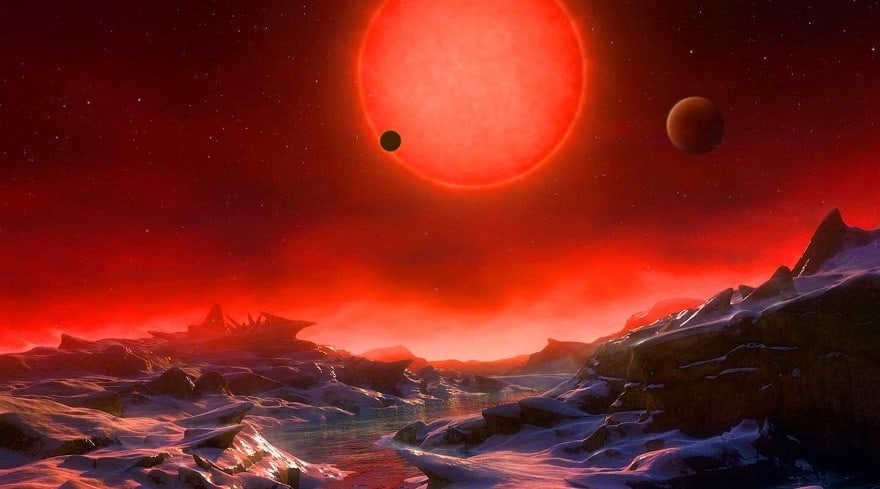
Artist’s rendition of the view of Proxima Centauri from the surface of a potential exoplanet.
When discussing interstellar travel, people often envision warp speed and wormhole jumping. However, these methods are currently beyond our reach or even deemed impossible. Unfortunately, any long-distance journey would require more than a single generation to complete. Let’s begin by examining the most time-consuming approaches.
Europe
How long does it take to fly to Bulgaria?
Burgas
- Flight duration from Moscow to Burgas: 2 hours and 5 minutes
- Flight duration from St. Petersburg to Burgas: 3 hours
- Flight duration from Yekaterinburg to Burgas: 4 hours
- Flight duration from Kazan to Burgas: 3 hours 30 minutes
- Flight duration from Samara to Burgas: 3 hours
- Flight duration from Rostov-on-Don to Burgas: 2 hours
- Flight duration from Nizhny Novgorod to Burgas: 4 hours
- Flight duration from Ufa to Burgas: 4 hours
- Flight duration from Perm to Burgas: 4 hours 20 minutes
- Flight duration from Volgograd to Burgas: 3 hours
- Flight duration from Chelyabinsk to Burgas: 4 hours 40 minutes
- Flight duration from Belgorod to Burgas: 3 hours 20 minutes
- Flight duration from Orenburg to Burgas: 3 hours 50 minutes
The duration of the flight from Moscow to Sofia is 3 hours and 20 minutes.
What is the travel time to Greece?
Crete
- The flight from Moscow to Crete takes 3 hours and 45 minutes.
- The flight from St. Petersburg to Crete takes 4 hours.
- The flight from Yekaterinburg to Crete takes 5 hours.
- The flight from Rostov-on-Don to Crete takes 3 hours.
- The flight from Novosibirsk to Crete takes 6 hours and 30 minutes.
- The flight from Ufa to Crete takes 4 hours and 45 minutes.
- The flight from Kazan to Crete takes 4 hours and 30 minutes.
- The flight from Samara to Crete takes 4 hours.
- The flight from Perm to Crete takes 5 hours and 30 minutes.
- The flight from Nizhny Novgorod to Crete takes 3 hours and 30 minutes.
- The flight from Krasnodar to Crete takes 3 hours.
Rhodes
- The flight duration from Moscow to Rhodes (Diagoras) is 3 hours and 30 minutes
- The flight time from St. Petersburg to Rhodes (Diagoras) is 3 hours and 40 minutes
- The flight duration from Yekaterinburg to Rhodes (Diagoras) is 4 hours and 30 minutes
- The flight time from Ufa to Rhodes is 4 hours
- The flight duration from Krasnodar to Rhodes is 2 hours and 10 minutes
- The flight time from Samara to Rhodes is 4 hours
Thessaloniki
- The duration of a flight from Moscow to Thessaloniki is 3 hours and 5 minutes.
- The flight time from St. Petersburg to Thessaloniki is 3 hours and 25 minutes.
How long does it take to fly to Spain
Tenerife
- The duration of a flight from Moscow to Tenerife is 7 hours and 15 minutes.
- The flight time from St. Petersburg to Tenerife is 7 hours.
- The flight time from Yekaterinburg to Tenerife is 9 hours.
- The flight time from Rostov-on-Don to Tenerife is 4 hours.
- The flight time from Novosibirsk to Tenerife is 10 hours.
Barcelona
- The flight duration from Moscow to Barcelona is 4 hours and 30 minutes
- It takes 4 hours to fly from St. Petersburg to Barcelona
- The flight time from Yekaterinburg to Barcelona is 6 hours and 20 minutes
Palma de Mallorca
- The flight duration between Yekaterinburg and Palma de Mallorca is 6 hours
- It takes 4 hours to fly from St. Petersburg to Palma de Mallorca
How long does it take to fly to Cyprus?
- The flight duration from Moscow to Larnaca is 2 hours and 55 minutes.
- It takes approximately 4 hours and 40 minutes to fly from St. Petersburg to Larnaca.
- If you are flying from Yekaterinburg to Larnaca, the flight time is around 4 hours and 30 minutes.
- The duration of the flight from Samara to Larnaca is about 3 hours and 30 minutes.
- If you are departing from Kazan, the flight to Larnaca takes approximately 4 hours.
- The flight time from Nizhny Novgorod to Larnaca is 3 hours and 30 minutes.
- When flying from Ufa to Larnaca, expect a flight duration of 4 hours.
- The flight from Rostov-on-Don to Larnaca takes 2 hours.
- If you are traveling from Perm to Larnaca, the flight time is around 4 hours.
- The duration of the flight from Chelyabinsk to Larnaca is about 4 hours and 30 minutes.
- When flying from Novosibirsk to Larnaca, expect a flight duration of 6 hours.
- The flight time from Krasnodar to Larnaca is 2 hours and 20 minutes.
- If you are departing from Tyumen, the flight to Larnaca takes approximately 5 hours.
- The flight from Voronezh to Larnaca takes 3 hours.
How much time does it take to travel to Prague by plane?
- It takes 2 hours and 45 minutes to fly from Moscow to Prague.
- The flight duration from St. Petersburg to Prague is 2 hours and 30 minutes.
- The travel time from Yekaterinburg to Prague by plane is 4 hours and 45 minutes.
- The flight duration from Rostov-on-Don to Prague is 3 hours and 30 minutes.
- It takes 6 hours and 40 minutes to fly from Novosibirsk to Prague.
How much time is required to travel to Istanbul?
- The duration of the flight from Moscow to Istanbul is 3 hours and 5 minutes
- The flight from St. Petersburg to Istanbul takes approximately 3 hours and 30 minutes
- If you are flying from Yekaterinburg to Istanbul, the flight time is around 7 hours and 20 minutes
- The flight duration between Moscow and Tivat is about 3 hours and 10 minutes
- If you are traveling from St. Petersburg to Tivat, the flight takes approximately 2 hours and 20 minutes
Flights with stopovers
There are no non-stop flights to Vladivostok from most cities in Russia. If you are planning to travel from the Urals and Siberian regions, the most convenient option is to have a stopover in Novosibirsk or Irkutsk – flights to Vladivostok depart from these cities almost every day. S7 airline offers convenient connecting flights with minimal layover time at Novosibirsk airport.
Travelers heading to Vladivostok from cities in the southern part of Russia, the Volga region, and Central Russia usually prefer to have a stopover in Sheremetyevo airport in Moscow. However, if there are direct flights between your city and Novosibirsk, it is worth considering this option as well – sometimes having a layover in Siberia can significantly reduce the total flight time.
Flight paths to Mars
It is important to note that within the Solar System, there exist numerous gravitational points, making it impractical to launch objects in a direct path. It is crucial to minimize the influence of the Sun’s gravitational pull, as it has the potential to attract and obliterate any object originating from Earth. Consequently, specific flight paths have been devised to enable successful travel to the Red Planet. There are several primary routes for reaching Mars.
Mars-bound routes
Goman trajectory
The Goman trajectory is a technique that involves propelling an object in the direction of a celestial body. This innovative method was pioneered by Walter Homann, a renowned German engineer, who proposed the idea of launching vehicles against the natural motion of planets. However, one drawback of this trajectory is its high fuel consumption for the purpose of deceleration.
Ballistic capture
Ballistic capture – the second approach suggests launching vehicles directly into Mars’ orbit in the opposite direction, using the atmosphere for braking. This technique requires more time to implement.
Parabolic trajectory
The parabolic trajectory is the most technically challenging route, but it offers a completion time of only 80 days. To achieve this, the spacecraft would need to accelerate to 16.7km/s, which is equivalent to the third cosmic velocity. Such a maneuver would require four times more fuel than the first method. However, due to the significantly reduced travel time, savings can be made on food and life support for the crew.
The Local Group is a component of the cosmic web
The Virgo cluster, located approximately 55 million light-years away, is the nearest collection of galaxies to the Local Group. Within the Virgo cluster, there are more than 2,000 “island universes”. In comparison, the Local Group consists of around 50 confirmed galaxies and potentially another 30, based on unverified data. However, the majority of the galaxies within the Local Group are not on the same scale as the Milky Way and the Andromeda Galaxy. Nevertheless, the Local Group represents just a small, peripheral segment of the supergroup of galaxies, which contains over a thousand distinct galaxies. These super clusters, when combined, form a colossal yet nonexclusive substructure of the Universe. Makes you feel insignificant, doesn’t it?
Below is a selection of galaxies that belong to the Local Group
The Large and Small Magellanic Clouds, which are located 163,000 light-years away from the Milky Way, are dwarf galaxies that will eventually be absorbed by our galaxy. It is not unexpected, considering that our galaxy is currently in the process of destroying and consuming the Sagittarius spheroidal dwarf galaxy. Furthermore, in approximately 4 billion years, the Milky Way and the Andromeda Galaxy will collide, resulting in the formation of a new, larger galaxy that will eventually evolve into a massive elliptical galaxy.
The Large and Small Magellanic Clouds still remain fascinating celestial companions.
Because astronomers can only observe the observable Universe, examining the Local Group galaxies and the nearby Virgo cluster provides scientists with the opportunity to observe a microcosm – a sort of laboratory or miniature Universe. Dark matter, a substance referred to by astronomers, constitutes 26% of all matter in the universe, but its true nature remains unknown. By utilizing a technique known as gravitational lensing, astronomers have investigated the Milky Way’s halo and dismissed several potential candidates. Similarly, scientists employ neighboring galaxies to examine the locations where black holes originate. In either case, the development of galaxies and the process of star formation enable scientists to acquire a greater understanding not only of our own galaxy, but also of the entire universe.
Calculating the distance to Mars in kilometers
In 2003, the minimum distance from Earth to Mars was recorded at 53 million kilometers. Such a close approach will not happen again for another 50 thousand years. Every two years, the distance between the two planets decreases to 54.6 million kilometers, which is considered the standard minimum distance. On the other hand, scientists have determined that the maximum possible distance between Earth and Mars is 401 million kilometers. On average, the distance between the two planets is approximately 225 million kilometers.
Calculation of the Time Required for a Flight to Mars
In all likelihood, a manned spacecraft will be launched towards the Red Planet during a time when Mars and Earth are at their closest proximity. When determining the duration of the journey under these circumstances, the spacecraft’s launch will be timed to coincide with the optimal alignment of the planets, taking into account the time required for the spacecraft to reach Mars. It is estimated that the astronauts will spend a minimum of six and a maximum of seven months traveling to Mars. Therefore, the one-way trip is expected to last between 180 and 210 days.
Currently, there have been no manned missions to Mars. For instance, the American autonomous research station “Curiosity” embarked on a journey to Mars on the Goman trajectory from 26.11.2011 to 06.08.2012. As we can observe, the duration of the flight was slightly over eight months. Additionally, in 1964, the American spacecraft Mariner-4 also completed its voyage from Earth to Mars, which lasted for a period exceeding seven months (28.11.1964 – 14.07.1965).
The Curiosity rover successfully landed on the Red Planet approximately eight months later.
The calculation of the duration of astronauts’ travel to Mars is a crucial task in the planning of a manned space expedition to the Red Planet. It directly affects the necessary quantities of food, fuel, battery capacity, oxygen reserves, and other essential resources. An error in these calculations could be extremely costly.
Calculating the trajectory accurately is of utmost importance as the Earth and Mars are in constant motion within their respective orbits.
Launching a rocket from point A on Earth to point B on Mars requires careful consideration of the advance. This is because during the journey, Mars will continue to move in its orbit, thereby significantly increasing the distance between our planet and the destination.
What is the cost of flying to Mars from the Moon?
It takes approximately three days to fly from Earth to the Moon. In terms of duration, the flight from the Moon to Mars would be three days shorter. However, this is just a theoretical estimate. In reality, launching from the Moon would significantly decrease the cost of the flight and reduce the weight of the spacecraft due to the need for less fuel. The second space velocity required for the Moon is only 2.4 km/s, compared to Earth’s 11.2 km/s.
Hence, it will require significantly less effort to escape the gravitational field of a celestial body (specifically, the Moon). However, the concept of lunar launch still remains within the realm of theoretical advancements. The missing piece in connecting the lunar launch of a spacecraft to Mars and the current situation is the absence of a suitable launch facility on the Moon.
The duration of a journey from the Moon to Mars is not fundamentally different from the duration of a journey from Earth to Mars. Nevertheless, launching a manned space complex from the Moon will enable a much more efficient utilization of the spacecraft itself. It is projected that when launched from Earth, the payload factor will not exceed 25%, whereas launching from the lunar surface will surpass 40%.
The most efficient method of traveling through outer space is by utilizing gravitational maneuvers. This strategy involves a spacecraft taking advantage of the relative motion and gravitational pull of celestial bodies, such as planets, to alter its course and increase its velocity. Gravitational maneuvers are an invaluable technique in space travel, particularly when utilizing the gravitational forces of Earth or other massive planets, such as gas giants, for acceleration.
The pioneering Mariner 10 spacecraft was the first to employ this method, harnessing the gravitational pull of Venus to propel itself towards Mercury in February 1974. Similarly, during the 1980s, the Voyager 1 probe utilized the gravitational forces of Saturn and Jupiter to execute maneuvers and achieve an astonishing velocity of 60,000 km/h, ultimately venturing into interstellar space.
The Helios 2 mission, which initiated in 1976 with the aim of investigating the interplanetary medium within the range of 0.3 a. e. and 1 a. e. from the Sun, currently holds the title for the greatest velocity attained through a gravitational maneuver. During that period, both Helios 1 (which was launched in 1974) and Helios 2 set the benchmark for the nearest approach to the Sun. Helios 2 was launched using a conventional rocket and positioned into an extremely elongated orbit.
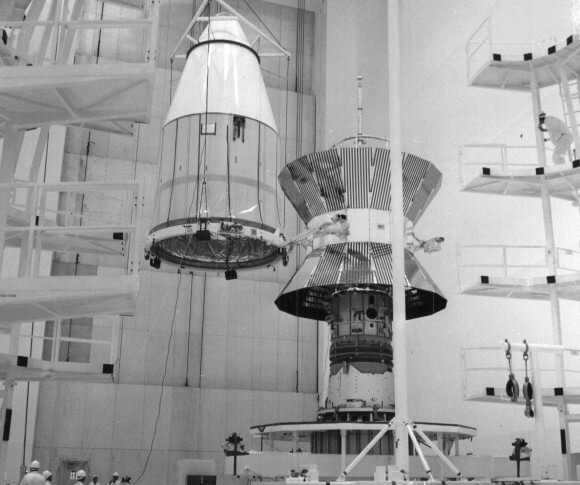
Because of the 190-day solar orbit’s large eccentricity (0.54), Helios 2 was able to achieve a top speed of more than 240,000 km/h when it was closest to the Sun. This speed was solely due to the gravitational pull of the Sun. From a technical standpoint, Helios 2’s speed at perihelion was not a result of gravitational maneuvering, but rather its maximum orbital velocity. Nevertheless, the spacecraft still holds the record for being the fastest man-made object.
If Voyager 1 were to travel towards the red dwarf Proxima Centauri at a steady velocity of 60,000 kilometers per hour, it would require approximately 76,000 years (equivalent to over 2,500 generations) to traverse that distance. However, if the spacecraft were able to achieve the same velocity as Helios 2, which maintained a constant speed of 240,000 kilometers per hour, it would only take approximately 19,000 years (or over 600 generations) to journey 4.243 light-years. Although this is a significant improvement, it is still far from being a practical solution.
The region located between Mars and Jupiter is commonly known as the asteroid belt. This particular space is home to a multitude of irregularly shaped objects known as asteroids, which were first observed by astronomers in the early 19th century. Over time, scientists have gained a relatively thorough understanding of this area.
Within the asteroid belt, there are four significant asteroids, often referred to as the main belt:
One of the most notable objects in the main belt is Ceres, which is classified as a dwarf planet. It holds the title of being the largest object in the belt, with a diameter of approximately 950 kilometers. Meanwhile, the remaining asteroids in this group have diameters that do not exceed 600 kilometers.
The sizes of the other asteroids in the belt vary greatly, with some being so small that they are considered cosmic dust. However, the total number of particles in the asteroid belt exceeds one million. Even with such a large quantity, the belt is not considered to be overcrowded.
Spacecrafts travel through this region without ever encountering asteroids, however, celestial bodies frequently collide with each other here (given the astronomical time scales).
The outcome of these collisions varies depending on the velocity of the asteroids: if the velocity is high, a cluster of asteroids may form from the fragments of the colliding bodies, whereas if the objects’ velocity is low, two asteroids can merge together into a single entity.
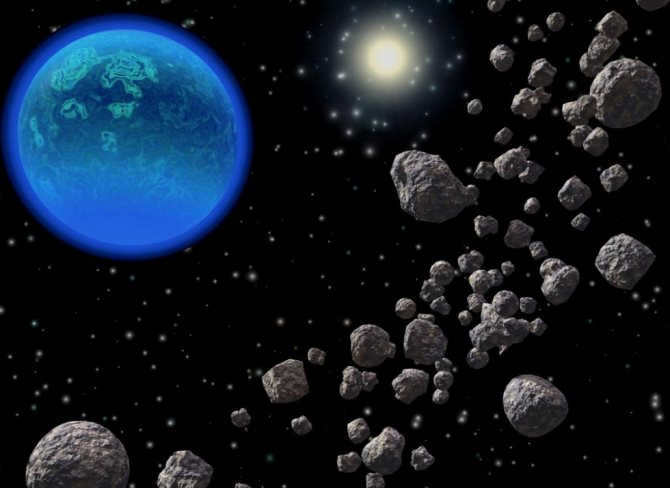
Carbon
Obscure asteroids, visible only through the lens of a telescope, are known as dark asteroids. As the name suggests, these asteroids are primarily composed of carbon, along with various minerals and rocks. Carbonaceous asteroids are particularly abundant in the main asteroid belt, accounting for approximately 75% of all objects. They are most prevalent towards the outer region of the belt, with their numbers diminishing significantly as they move further away from the Sun.
Silicate asteroids
The composition of these celestial bodies is akin to that of stone meteorites, with silicon being the predominant element. Silicate asteroids comprise approximately 17% of the asteroid belt and are most densely concentrated at a distance of 2 astronomical units from the Sun. As the distance from the star increases, the number of silicate asteroids decreases. These asteroids exhibit moderate brightness, and among them, there is a notably large object named Eunomia, which has a width of approximately 330 kilometers.
Iron asteroids
The largest category of asteroids in the asteroid belt. These asteroids are primarily composed of iron and nickel. They have a moderate level of brightness. Scientists believe that these objects are the remnants of the metallic cores of asteroids that were shattered during impacts.
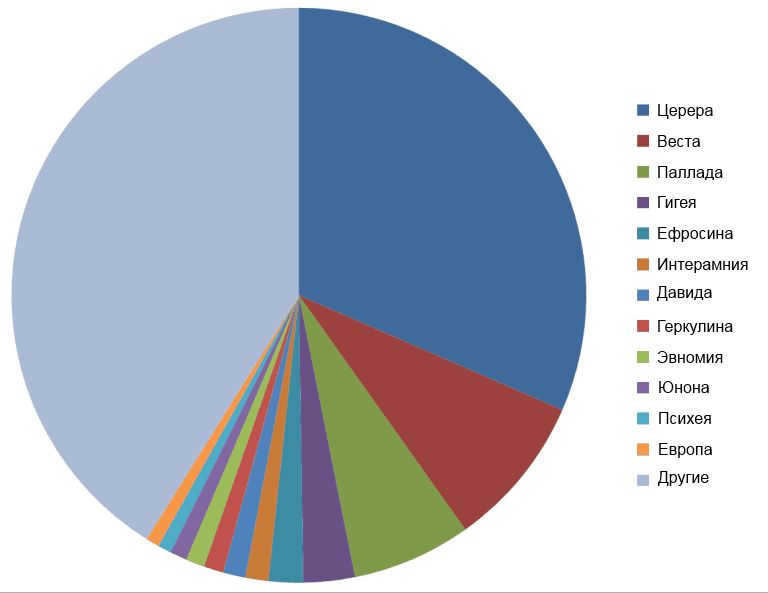

For years, humans have associated our Milky Way galaxy with the entire Universe while gazing out into the immense expanse of space. However, it wasn’t until technological advancements and scientific breakthroughs that we came to understand the true scale of the Universe. It became apparent that the Universe is far larger than a single galaxy. It wasn’t until we peered deep into the depths of space that we discovered our Milky Way is just one of countless galaxies that populate the vast cosmos.
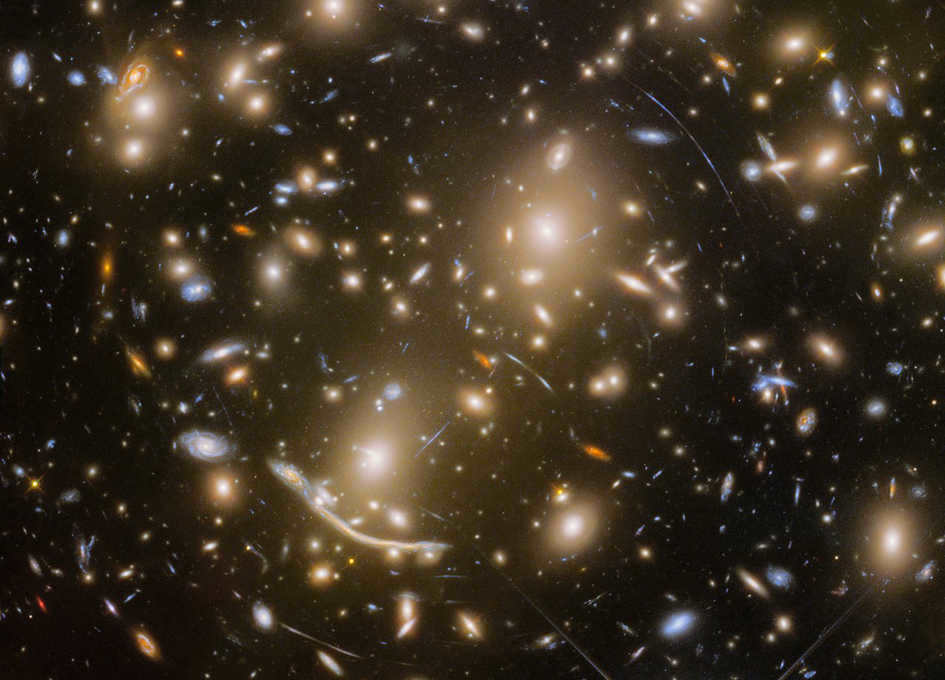
For as long as the universe has existed, the Andromeda galaxy has always been by the side of the Milky Way. Initially mistaken for the Andromeda Nebula, it was later discovered to be a massive collection of stars, surpassing the size of our own galaxy.
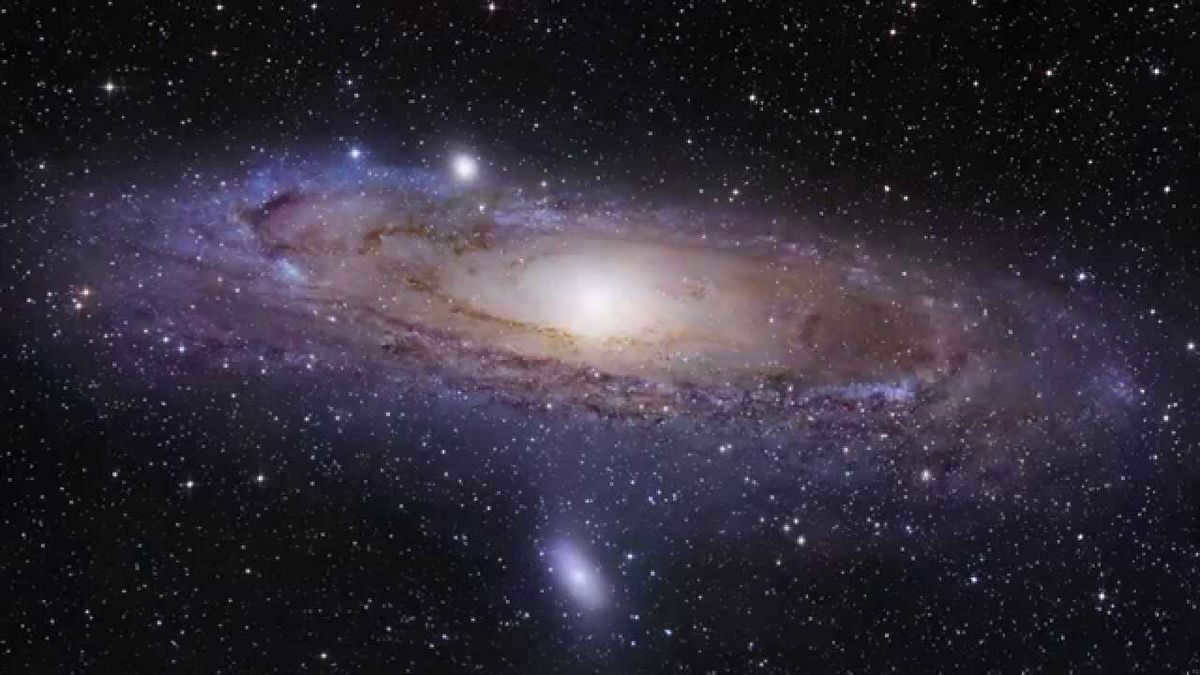
Early Observations of the Andromeda Galaxy
Ancient astronomers from the East, gazing at the night sky, noticed the presence of fixed stars. Although they lacked the technology to closely examine these celestial objects, they still recognized them as a distinct class. With the advent of optical telescopes, astronomers were able to provide the first scientific descriptions of these distant objects, initially identifying them as nebulae. Among these nebulae was a cluster of stars located in the constellation Andromeda.
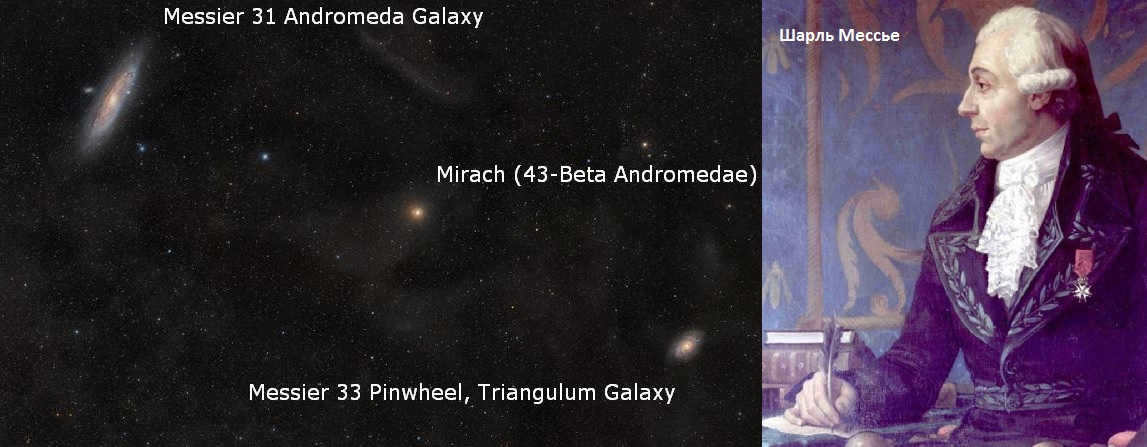
Further investigation of the celestial body known as M31 by the renowned British astronomer William Herschel revealed it to be the closest nebula to our own. Herschel even attempted to estimate its distance, although these calculations were later found to be inaccurate. It wasn’t until the 19th century that scientists were able to conduct in-depth studies and research on this enigmatic object. It was ultimately determined that the elusive entity known as M31 is situated within the Andromeda constellation, which can be observed in the first quadrant of the Northern Hemisphere. If one were to observe the Andromeda galaxy in the present day, the star Mirach, located within the Andromeda constellation, would serve as a useful point of reference.
By the latter half of the 19th century, it became evident that the gas-dust nebula hypothesis was incorrect. The initial spectral data of M31 suggested that it was actually a colossal star cluster situated at a significant distance from us. Subsequent observations confirmed the stellar nature of this detected entity. In 1885, a sudden burst of illumination occurred in the unexplored region of the Universe where new stars were discovered. This was a supernova, which remains the sole prominent astrophysical event recorded in this particular sector of the Universe to date. The eruption of the supernova provided an opportunity to capture the first photographs of M31, which was previously believed to be a constituent of our own Milky Way galaxy. The images remarkably revealed the spiral structure of the object, leading to the mistaken assumption that it was a remote stellar system.
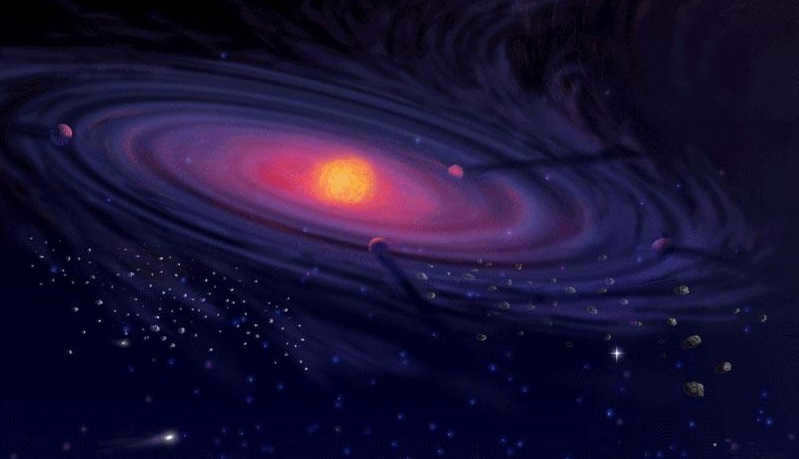
In the future, scientists conducted observations from Earth to explore planets orbiting around the theoretical center. However, this concept didn’t endure for long. The research conducted by American astrophysicist Edwin Hubble enabled a thorough examination of the structure of the Andromeda Nebula. Hubble concluded that the nebula was situated at a significant distance from us, surpassing the size of our own Milky Way galaxy. Based on this observation, Hubble proposed the notion that we are actually dealing with a distinct galaxy.
The verification of his theory came from the velocity of the object M31, which was calculated by another American scientist, Vesto Slipher, in 1912. It was discovered that a group of stars in the Andromeda constellation is moving towards us at an incredible speed of 300 kilometers per second. This information contradicted the stationary positions of other celestial bodies in our galaxy. Based on this data, Edwin Hubble proposed categorizing all observed nebulae from Earth into two groups: galactic and extragalactic objects. The Andromeda Galaxy, a star system similar to our own Milky Way, was subsequently classified as an extragalactic object.
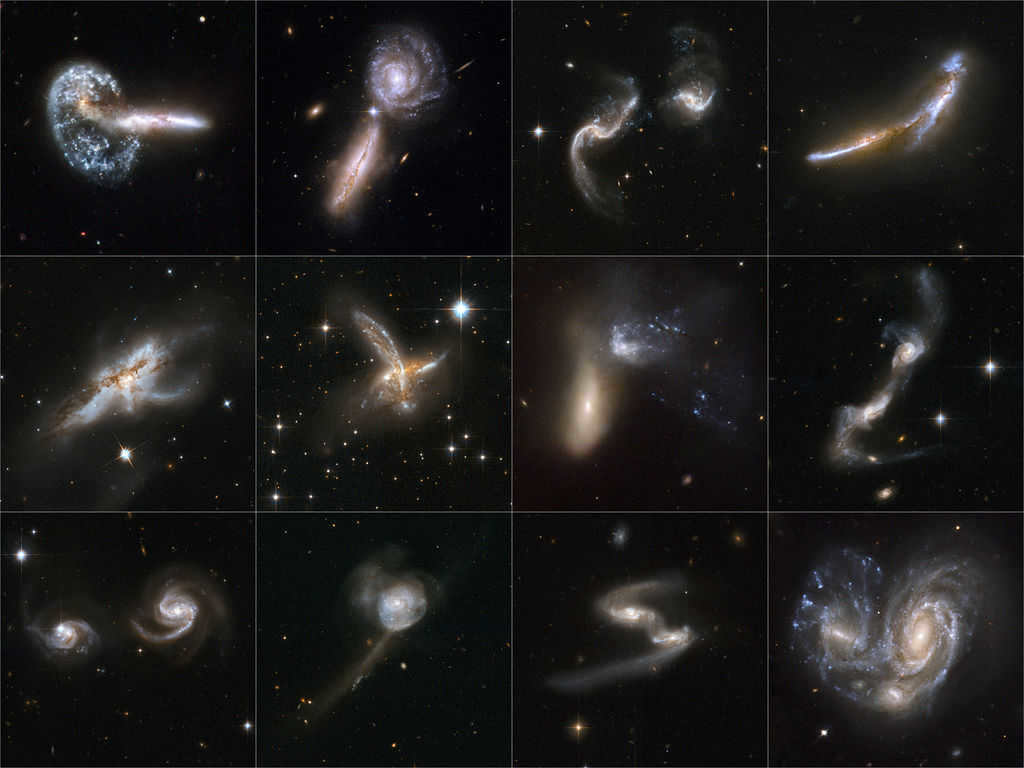
Ever since that time, the designation Andromeda Nebula has become part of the past, and a fresh galaxy has emerged in its place, which actually happens to be the nearest extragalactic entity to our location.
During the late 1800s and early 1900s, scientists were perplexed by the identity of our nearby galaxy. Nowadays, this neighboring galaxy has become the subject of extensive research and observation, making it the most studied extragalactic object in the Universe. Numerous astronomical observations of stars within the Andromeda Galaxy have provided valuable data for scientists to explore the nature of the Universe beyond our own Milky Way. Furthermore, the close proximity and behavior of this galaxy offer valuable insights into the ongoing cosmic processes on a universal scale.
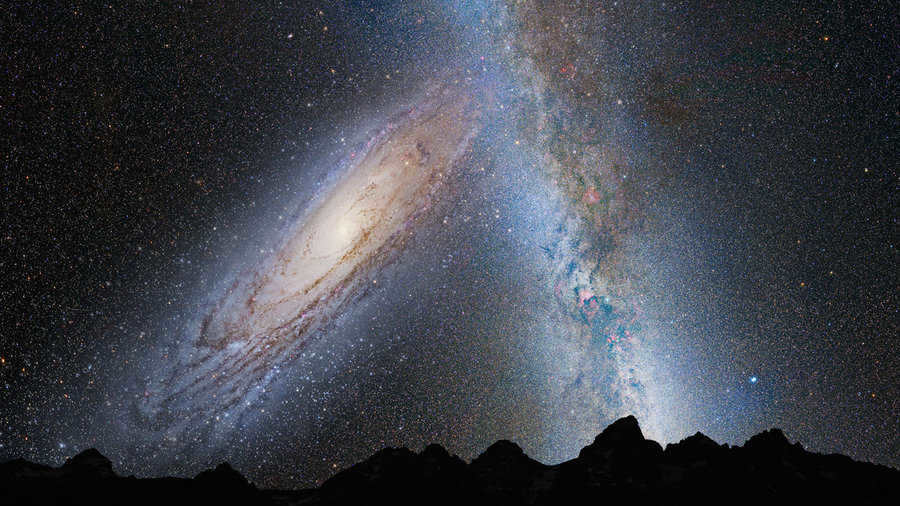
All previous visual and fictional depictions of our Milky Way galaxy have been based on the imagined perspective of observations from the Andromeda galaxy. In contrast, scientists have long considered the neighboring galaxy to be a mirror image of our own stellar island. However, recent advancements in astrophysics have provided more detailed images of Andromeda, revealing that our neighbor is actually much larger than the Milky Way and has significant structural differences.
Here is what we currently know about the Andromeda Galaxy:
- It is classified as an Sb galaxy.
- It belongs to the Local Group.
- It is part of the group of extragalactic objects with a violet shift.
- The Milky Way galaxy is approaching at a speed of 140 kilometers per second;
- There are approximately one trillion stars in its stellar composition;
- The galaxy has an approximate diameter of 250,000 light-years, which is four times the size of the Milky Way;
- There are four known dwarf satellite galaxies: M32, M110, NGC185, and NGC.
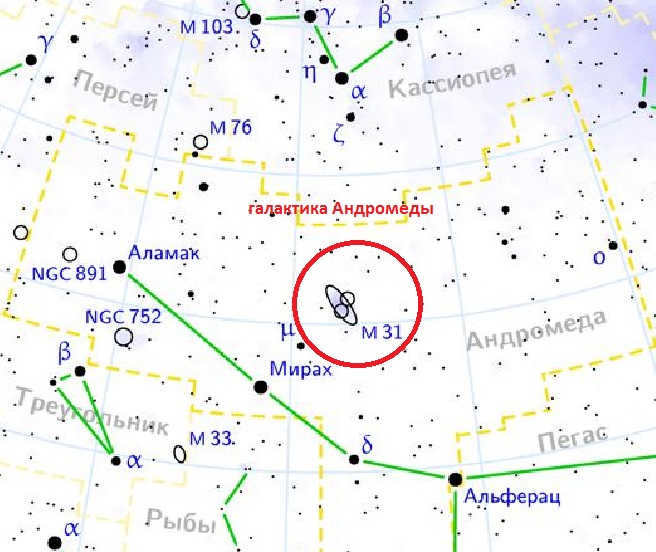
Upon initial observation, the traits mentioned appear to be quite comparable to the data we have on our own galaxy. What is particularly concerning is the swift pace at which our neighboring galaxy is drawing near to our stellar abode. It is anticipated that within the span of 5 billion years, the Milky Way will become assimilated by the Andromeda Galaxy, giving rise to a novel extragalactic entity.

Contrary to the spiral arms of our own Milky Way, the Andromeda Galaxy exhibits a distinctive pattern with its arms being more widely separated. Additionally, some of these arms possess a unique and irregular shape, adding to the galaxy’s enigmatic beauty. Furthermore, scattered across these arms are multiple dark spots, which are a result of occasional encounters between the massive cosmic entity and smaller dwarf galaxies passing through its path.
The primary features of the Andromeda galaxy
When it comes to size, the gas-dust and stellar disk of the Andromeda galaxy exhibits a slightly different concentration compared to our own galaxy. The proportions of our neighboring galaxy, both in terms of linear size and the number of stars it houses, are accordingly distinct. While there exist massive extragalactic formations called megalaxies, containing 100 trillion or more stars, the Andromeda galaxy is by no means a diminutive extragalactic object in comparison.
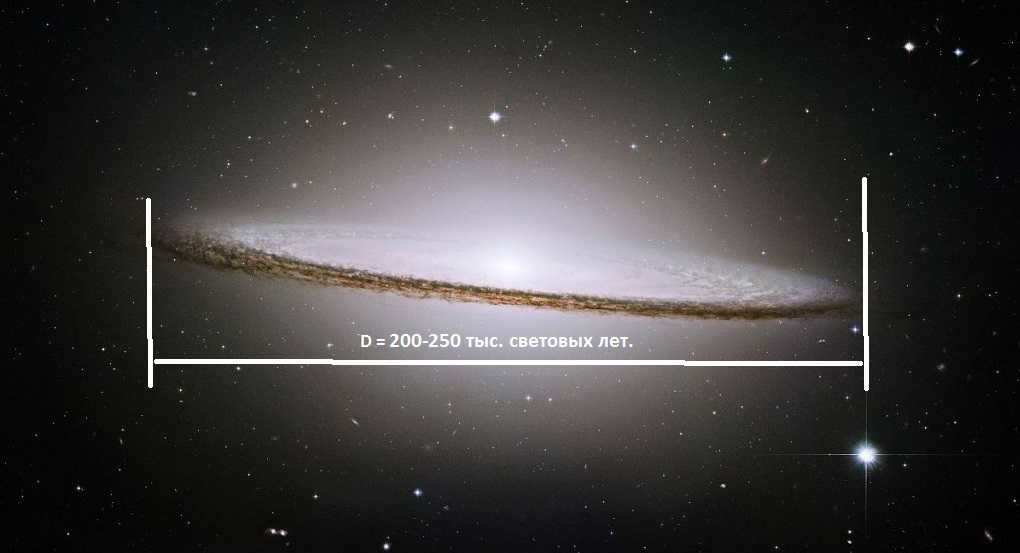
One of the most remarkable and remarkable features of our neighboring galaxy is the enormous size of its disk. M31 boasts a stellar disk diameter of 200-250 thousand light-years. In our Local Group, Andromeda holds the prestigious first position. The neighboring galaxy also surpasses the Milky Way in terms of star count. Additionally, due to its significant distance from us, it is relatively easy to calculate them with our current technological capabilities. At present, we know that there are approximately 1 trillion stars in Andromeda. However, scientists speculate that there may be even more stars in M31, as a portion of the object is obscured by the arms of the Milky Way, making an accurate count challenging. The recent map of M31 created by scientists provides further insight into the true size of our cosmic neighbor.
The Milky Way is estimated to contain around 400 billion stars, although this figure could be higher due to the higher concentration of gas and dust clouds compared to neighboring galaxies. This means that our galaxy is not as transparent as other galaxies outside of the Milky Way.
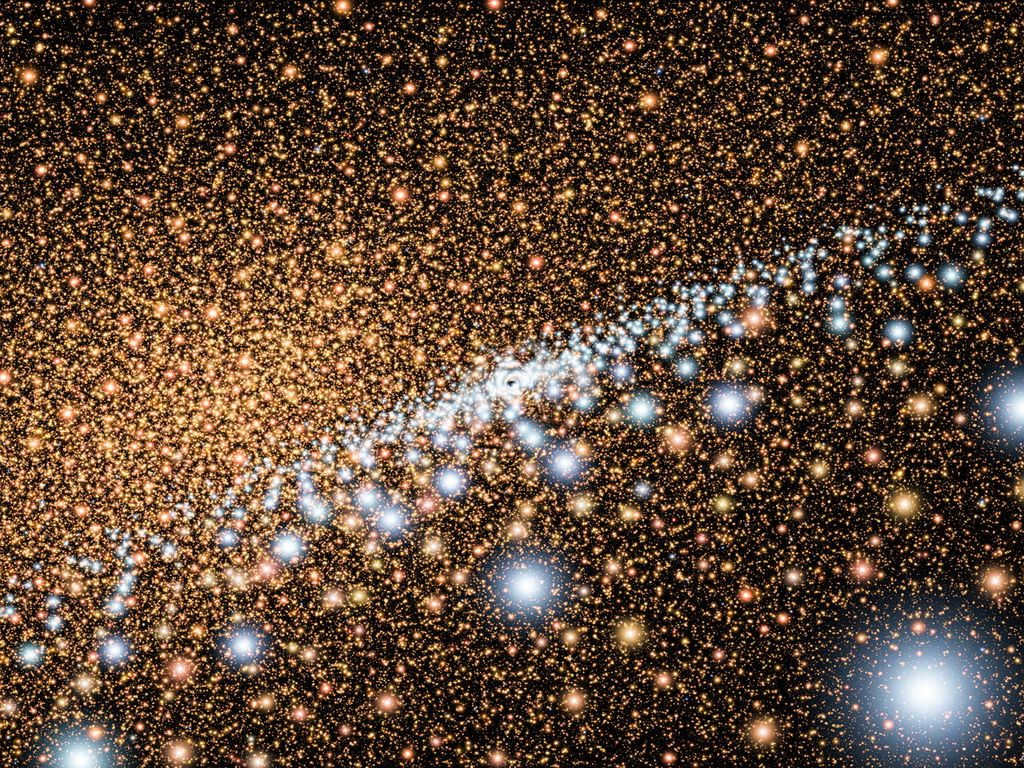
The two galaxies have a similar mass, estimated to be around 1-1.5 trillion times the mass of our Sun. This similarity is due to the presence of a comparable amount of dark matter in both galaxies. Determining the mass of a galaxy involves analyzing the masses of visible celestial objects and the quantity of cosmic gas. However, it is not possible to obtain precise measurements of the size and mass of a neighboring galaxy. These calculations can only be made using the gravitational laws that govern the Universe, but this process would require thousands of years, surpassing the lifespan of any current generation. Considering that observations of the Andromeda galaxy have only been conducted for a little over 150 years, the available data is clearly insufficient for accurate measurements.
Notwithstanding this, scientists hypothesize and deduce the behavior of our adjacent galaxy by calculating its motion. The Andromeda Galaxy is in a perpetual state of motion, with its constituents traversing space at varying velocities. In proximity to the core, celestial bodies orbit the nucleus at a rate of 225 km/s, whereas on the outskirts, the velocity of celestial bodies and gas diminishes fourfold to 40-50 km/s.
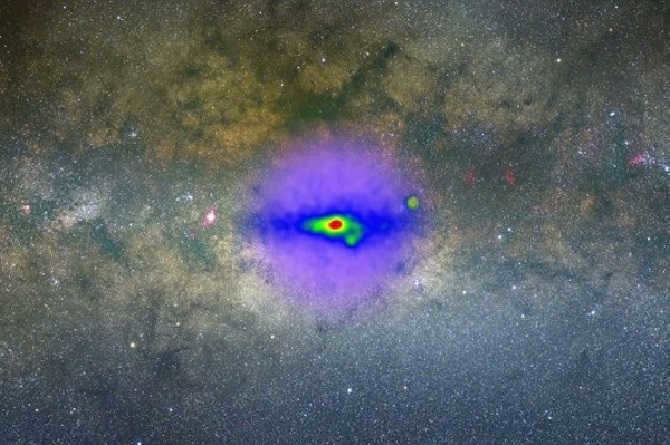
The center of the Andromeda galaxy is home to a mesmerizing stellar round dance, composed of huge massive stars and a supermassive black hole. This black hole, which has a mass of approximately 140 million solar masses, is surrounded by a necklace of blue stars. These stars gracefully orbit around the galactic center, akin to the planets in our own solar system. Furthermore, within the stellar disk of Andromeda, scientists have recently discovered the presence of an additional 35 black holes, each of which plays a role in shaping the galaxy’s behavior.
In the center of Andromeda, there are various intriguing objects. In 1993, scientists detected a dual cluster of stars in the core. The behavior of this cluster indicates that it will eventually merge into a single entity within the next 100,000 years. Additionally, numerous X-ray sources, believed to be white dwarfs, have been discovered in the central region. Surrounding the core of the M31 galaxy, there is also a collection of neutron stars. Collectively, all of these findings suggest that the central portion of the Andromeda Galaxy is a complex web of scientific wonders waiting to be unraveled by researchers.
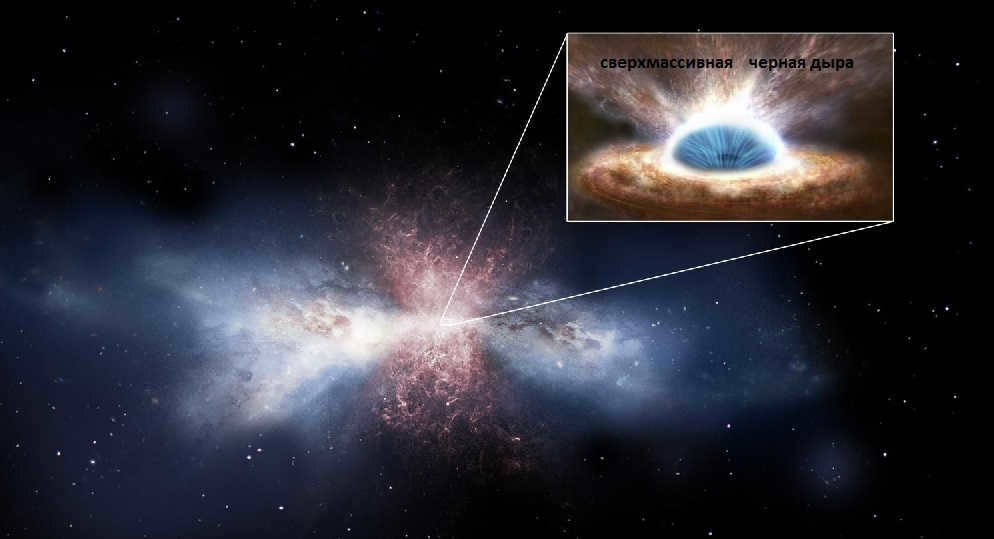
The Andromeda galaxy’s movement within the Universe is accompanied by 14 dwarf galaxies, which serve as its satellites. Previously, only 4 dwarf galaxies had been identified, but now their number has nearly quadrupled. It remains unclear how many have existed since the extragalactic formation was formed. Based on Andromeda’s behavior, it appears that our neighboring galaxy is quite voracious and regularly consumes its dwarf companions.
To sum up
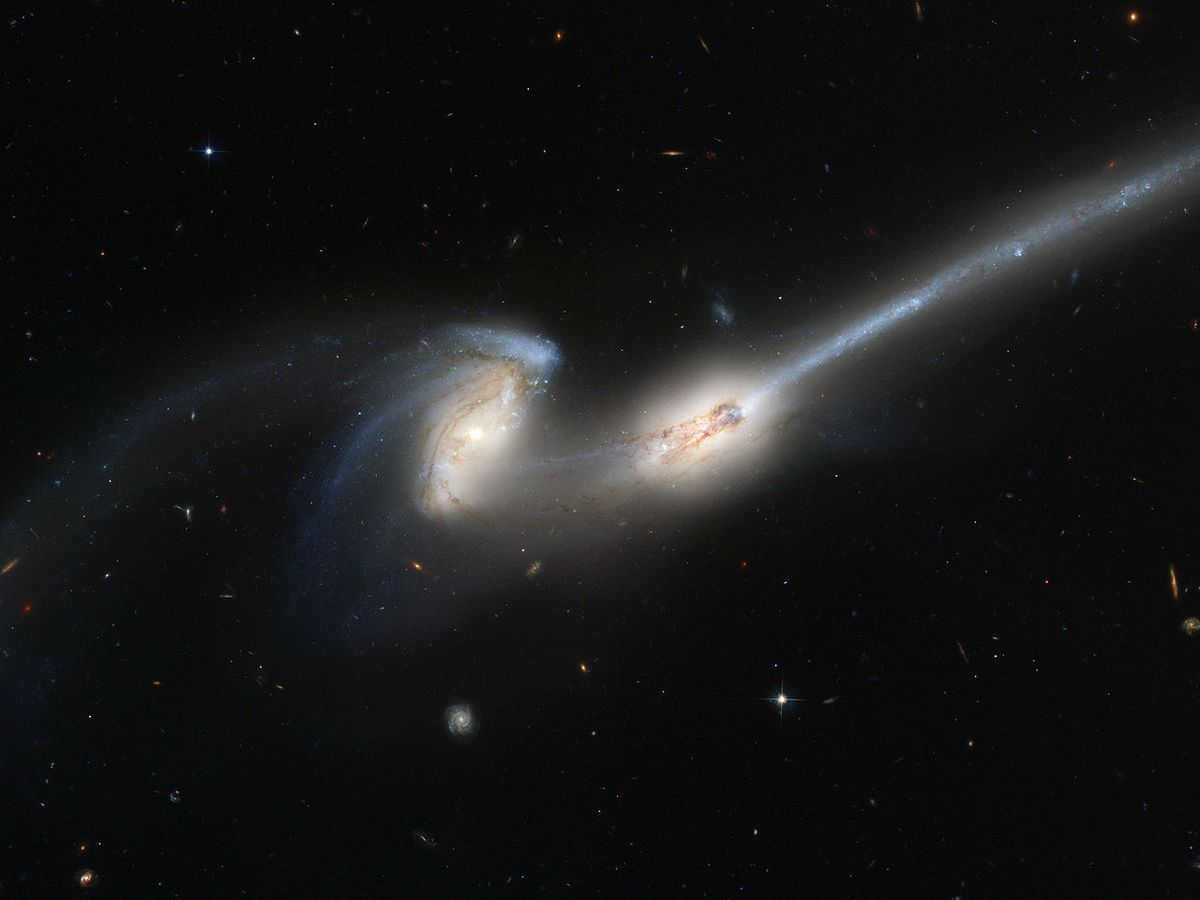
The answers to numerous queries might not be discovered in the near future, but presently we possess a concept that the entire Universe is an enormous and vast mechanism. The Andromeda Galaxy, just like our Milky Way, abides by the same laws. This suggests that in the expansive and limitless expanse of space, there could exist a world similar to ours, which could be situated at a great distance or, conversely, be in close proximity, within a neighboring galaxy.
It remains uncertain whether human civilization will endure until that time. According to estimations, both neighboring galaxies will collide in 3-4 billion years. By then, the Sun will be suspended in the sky as a colossal red sphere, transforming into a Red Giant. It is probable that by that point, life will cease to exist on planet Earth, but it is plausible that spaceships will already possess the capability to traverse vast distances, investigating and examining neighboring galaxies.
871.1k
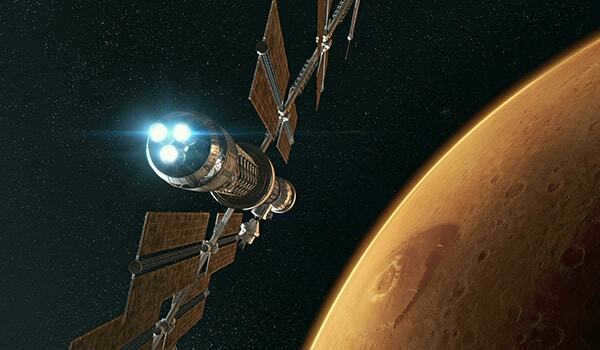
How far do you have to travel to reach Mars from Earth?
Mars, the fourth planet from the Sun and the closest to Earth after Venus, poses a challenge for missions due to its extreme climatic conditions:
enormous atmospheric pressure;
However, Mars offers more favorable climatic conditions for exploration. The distance between the two planets is minuscule in cosmic terms. Nevertheless, a human would have to cover a substantial distance, tens or even hundreds of millions of kilometers, to reach Mars.
The distance that needs to be covered in kilometers from Earth to reach a specific destination point largely depends on the trajectory followed. Typically, this trajectory takes the form of a “big arc” that elegantly connects the launch time on Earth with the desired destination. These arcs are often much longer than the straight-line distance between the two celestial objects at any given moment.
Let’s ponder the question, -What is the duration of the journey to Mars?
Assuming we are calculating based on a simple, direct path with the shortest distance.
Considering that planets in our solar system orbit the Sun in their own elliptical paths, each with its own unique velocity, the distance between Earth and Mars constantly changes. Scientists have determined the distance required to travel in kilometers on a straight trajectory from Earth to Mars:
The maximum distance is 401,330,000 kilometers.
The average distance is 227,943,000 kilometers.
The minimum distance, then, is only 54,556,000 kilometers.
These two planets come closest to each other at this minimum distance approximately every two years, making it the optimal time to launch missions.
Flying directly to the destination is not a viable option. As mentioned earlier, the planets are constantly in motion. Therefore, the spacecraft will not intersect with the red planet along its path, and it will be necessary to catch up with Mars, at least in theory. In practice, this is not feasible as we currently lack the technology to pursue a planetary object.
Therefore, for a successful journey, the launch must coincide with the arrival of Mars in the same location or even precede it, allowing the planet to catch up with the spacecraft.
In practical terms, this means that the journey can only commence when the planets are in the correct position. This launch window occurs every 26 months. During this time, the spacecraft can utilize the most energy-efficient flight path known as the Goman trajectory, but we will discuss this in more detail later.
Orbital mechanics, or the science of calculating the distances traveled in space, is a fascinating subject. When considering the elliptical orbits of Earth and Mars, it becomes clear that the distance between them can vary significantly. This is due to the fact that the two planets are at different distances from the Sun and travel at different speeds.
Every two years and two months, Earth and Mars reach their closest point to each other, known as “opposition.” During this time, Mars can be anywhere from 55.68 to 101.39 million kilometers away from Earth, depending on the specific year.
Thirteen months after opposition, the planets reach “conjunction,” which is the point when they are on opposite sides of the Sun and as far away from each other as possible. It is important to note that planning a departure at the point of opposition can result in a faster journey to our destination. However, navigating the complexities of orbital mechanics is not as simple as it may seem!
Fast travel would be possible if the interstellar vessel followed a direct path. Unfortunately, space travel is much more complex than a straight line. The orbital dynamics of each celestial body are distinct. All the planetary entities in the solar system are in perpetual motion and this poses a significant challenge for travel.
So, what is the distance in kilometers required to travel from Earth to Mars? Let’s attempt to calculate it. If you still believe that the optimal approach to reach your destination is to wait until the two planets are in close proximity, then aim a rocket towards the target and soar. It’s important to understand that this approach will not be effective for several reasons:
Initially, the trajectory of any launched vehicle will be influenced by the gravitational pull of Earth. However, to nullify this effect, let’s imagine that the rocket is positioned in a far-off orbit around Earth where gravity is weak and orbital motion is slow. This way, we can disregard both of these factors. Nonetheless, even in this scenario, the rocket is still orbiting the Sun in conjunction with Earth, and it is moving at a speed of approximately 30 km/s. Consequently, if the rocket proceeds towards its target, it will maintain Earth’s velocity and simultaneously begin its rotation around the Sun while heading towards the flight control point.
Additionally, if we launch the spacecraft when Mars is closest to Earth, by the time the ship has traveled the distance towards the target, the planet will have already progressed along its orbital path.
Next, the Sun’s gravitational force exerted control over the entire system. All celestial bodies follow elliptical paths or trajectories, which can be understood as sections of conic shapes according to Kepler’s laws. To put it simply, these paths are curved.
When aiming for the desired destination during opposition, the actual closest distance turns out to be much greater. Overcoming this distance requires a substantial amount of fuel. Unfortunately, we are unable to physically increase the capacity of the fuel tanks. As a result, astrophysicists opt to accelerate the spacecraft for the journey to Mars. Once accelerated, the spacecraft travels with inertia and cannot resist the gravitational pull of celestial bodies. This leads to a significant increase in distance as the spacecraft follows a large arc. This route represents half of the heliocentric orbit around the Sun, spanning between Mars and Earth.
Let’s calculate the length of half of the Earth’s orbit, which is 3.14 astronomical units (a.u.). Mars has a distance of 4.77 a.u. We need to find the average distance between these planets, which is half of its length, or 3.95 a.u. We can then multiply this distance by 1 a.u., which equals 149597868 km, and round up the result.
Recall that one astronomical unit (1 a.u.) is equal to 149597868 km.
Therefore, the approximate distance that will need to be traveled is about 600 million kilometers. For more accurate calculations of the exact distance to be flown, more complex algorithms are used.
How long does it take to fly to Mars?
It is impossible to give a definitive answer to the question of how long it takes to fly to Mars. The duration of the flight depends on several factors:
– The relative positions of the planets;
– The amount of cargo (payload) on board;
If we consider the first two factors, we can theoretically calculate the time it takes to travel from Earth to Mars. In order for a spacecraft to travel through space, it needs to launch from Earth and overcome the force of gravity.
Scientific Facts: To reach Earth’s orbit, a rocket needs to reach a minimum speed of 7.9 km/s (29,000 km/h). To send a spacecraft on an interplanetary journey, a speed of slightly over 11.2 km/s (40,000 km/h) is required.
On average, interplanetary travelers travel at a speed of about 20 km/s. However, there are also record-breaking journeys.
The New Horizons probe holds the record for the fastest spacecraft ever launched by humans into space. No other interplanetary vehicle has come close to reaching its speed of 16.26 km/s. However, if we consider the speed in a heliocentric orbit, we need to add the Earth’s speed of 30 km/s, resulting in a total speed of about 46 km/s relative to the Sun. That’s an impressive 58,536 kilometers per hour.
new horizons spacecraft
Based on these data, the shortest and most direct trajectory to Mars would take approximately 941 hours or 39 Earth days. Traveling along a route that corresponds to the average distance between our planets would require 3,879 hours or 162 days. The longest duration of flight, at maximum distance, would be 289 days.
traveling between planets by airplane
Imagine if we could dream and envision a journey to Mars via an airplane, traveling in a direct path. If we were to cover a distance of 54.556 million kilometers by plane, taking into account the average speed of modern passenger planes at around 1,000 km/h, it would require a total of 545,560 hours. In terms of days, this equates to 22,731 days and 16 hours. Taking it a step further, this incredible feat would amount to nearly 63 years. However, if we were to take a more elliptical route, the duration of the journey would increase by 8-10 times, resulting in an average of approximately 560 years.
How many Earth years, days, and hours does it take to travel a human to Mars?
What is the duration of a human’s journey from Earth to Mars? If you have aspirations of becoming an astronaut on the inaugural manned mission, be prepared for an extensive voyage. Scientists estimate that the round-trip would span approximately 450 Earth days, equivalent to 10,800 hours or 1.2 years on average.
Forecasts: time estimation for the journey
The primary variable that determines the duration of the trip to Mars is quite evident – the speed at which you are traveling. Speed plays a crucial role. The faster we can accelerate the spacecraft, the quicker we will reach our destination. The travel time for the fastest rocket following the shortest linear distance between the two planets would amount to a maximum of 42 Earth days.
Scientists have successfully launched numerous interplanetary modules, providing us with a general understanding of the estimated duration it would take using current technology.
On average, it takes space probes approximately 128 to 333 days to reach Mars.
However, if we were to attempt to send a human to Mars today, the most realistic option would be to utilize a large manned spacecraft rather than just a probe the size of an SUV. This would involve assembling an interplanetary craft in Earth’s orbit, fueling it, and then initiating the journey.
Ilon Musk, the tech mogul who leads SpaceX, claims that his Interplanetary Transportation System is capable of completing the trip in as little as 80 days, and potentially even as short as 30 days in the future.
Mars One scientists estimate that it will take approximately 210 days or 7-8 months to complete the journey.
According to NASA, a trip to Mars with humans would take around six months to reach the planet and another six months to return. Additionally, astronauts would need to spend 18-20 months on the surface before the planets align for the return trip.
Now let’s discuss how we can actually reach our neighboring planet and the duration of the journey.
The process of flying to Mars can be simplified: near Earth, we apply a boost for acceleration and transition to an ellipse that intersects both orbits. Once we arrive at Mars, we apply another acceleration impulse to enter its orbit. The duration of the flight can be calculated using Kepler’s third law.
What is the reason for the long duration of space travel?
Why is it currently not possible to reach the destination faster:
The primary factor is the immense distances that need to be covered. The minimum distance is not just millions, but tens of millions of kilometers. It is worth noting that the maximum distance to the planet is 401330000 km.
The second factor is technological limitations. The most commonly used engine for space travel is the chemical rocket jet engine. It can propel a spacecraft to very high speeds. However, these engines can only function for a few minutes due to excessive fuel consumption. The majority of the fuel is used to break away from the planet’s surface and overcome its gravitational force. Currently, it is not feasible to carry additional fuel reserves for the journey due to technical constraints.
Optimizing fuel consumption for a Mars mission
What is the amount of fuel required for a journey to Mars? The fuel reserve on the rocket is the most crucial factor in interplanetary travel. Chemical rocket engines, which currently have no viable alternatives, require a significant amount of fuel.
One reason for this is the need to overcome Earth’s gravitational force. The larger the spacecraft’s mass, the more energy is required for liftoff, and therefore, more fuel is needed.
Additionally, even if the most efficient flight route is chosen, the rocket must reach a minimum speed of 11.59 km/s (or 41,724 km/h) to reach Mars.
Aside from increasing velocity, the spacecraft must also perform a reset upon approaching Mars, which can only be accomplished by engaging the engines and expending fuel. It is important to consider the functionality of the life support systems, as human presence is expected during the flight.
It is feasible to expedite the journey to Mars, but this would require a greater expenditure of fuel. This is because the flight speed would need to be accelerated, resulting in a higher fuel consumption for braking purposes as well.
The engineers’ primary objective, which is finding a way to reach Mars with minimal fuel consumption, was already solved by Walter Homann in 1925. The concept behind his technique is to increase the rocket’s orbit instead of directly aiming for the planet. This adjustment causes the rocket to follow a larger orbit around the Sun compared to that of the Earth. Eventually, the rocket will intersect Mars’ orbit precisely when the planet is also there.
Engineers refer to this approach as a minimum energy transfer orbit, which allows spacecraft to be sent from Earth to Mars with the least amount of fuel required.

Mars, the fourth planet from the Sun, is situated between Earth, the third planet. This means that there are no other planets positioned between the orbits of Mars and Earth. The distance from Earth to Mars is greater than the distance from Mars to Venus, although on a cosmic scale, it is not significantly vast. This measurement can vary at different times due to the non-circular and elongated nature of the planets’ orbits within the solar system. For instance, in 2003, the distance between Earth and Mars amounted to 55 million kilometers, which coincided with Hubble’s documentation of the planet.
The minimum distance between Earth and Mars occurs when the latter reaches its perihelion point of orbit, while the former reaches its aphelion point. According to scientific calculations, the distance between the two planets during this time will be approximately 54.6 million kilometers.
Simultaneously, when the planets are in opposite positions around the Sun, the maximum separation between them amounts to 401 million km. The average distance between these celestial bodies is 225 million km.
Theoretical Duration of Earth-to-Mars Flight
Calculating the travel time from Earth to the red planet is a straightforward task utilizing simple formulas. The current fastest spacecraft can travel at a speed of 16.26 km/sec, which is quite impressive.
If a spaceship destined for Mars maintains the same velocity, it would take approximately 39 days to reach the destination when the red planet is closest to Earth. When Mars is at an average distance, the duration increases to about 162 days. At the farthest distance, the answer to the question of how long it takes to fly to Mars would be 289 days.
Flight duration: practical exercises
Naturally, the aforementioned statistics are only estimates. The calculations provided here assume a direct flight path. However, in reality, the spacecraft will need to cover a longer distance. This is because the planets are constantly in motion as they orbit the Sun. As a result, the answer to the question of how long it takes to travel to Mars will involve significantly larger values.
Examples of Mars Travel Times
With the successful launch of manned spacecraft to Mars, we now have a more precise understanding of the time it takes to travel to the planet. In 1964, the pioneering Mariner 4 covered the distance between Earth and Mars in just 228 days. Another mission, known as “Mars Express,” accomplished the journey in 201 days in 2003. Maven, an artificial satellite orbiting Mars, arrived at its intended location on day 307.
The Mars One Initiative
The Mars One program offers a unique opportunity for individuals seeking interplanetary exploration. Participants in this initiative must be willing to embark on a one-way journey to Mars, as returning to Earth is not an option. Despite this requirement, approximately 20,000 individuals have expressed their interest in joining the program. However, only 1,058 candidates were ultimately selected for further consideration.
It is projected that the initial group of volunteers will touch down on Mars in the year 2025. Subsequently, every two years, new settlers will join them in their extraterrestrial endeavors. The inability to return to Earth is due, in part, to the adverse effects of Mars’ lower gravity on the human body. Muscles quickly deteriorate in this environment, resulting in a considerable decrease in physical strength. For instance, an individual weighing 100 kg on Earth would weigh a mere 38 kg on the red planet.
Despite the fact that the fastest station can reach the surface of the planet in just 1.5 months, the journey with passengers will take considerably longer. Colonists will have to spend at least 7 months on the way. Scientists involved in the development of Mars One suggest that the volunteers will need at least 210 days to fly to Mars.
- What was the duration of the first human space flight?
- Is it possible for life to exist on Mars?
- What are the satellites orbiting Mars?
- How is the initial velocity for space travel calculated?
- When will private space flights commence?
- How is data from Curiosity transmitted to Earth?
- What is the distance between Earth and Mars?





